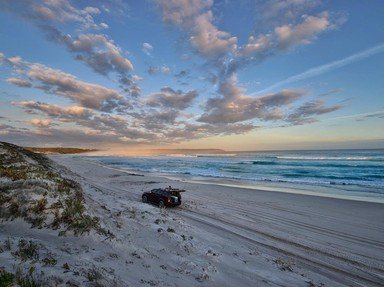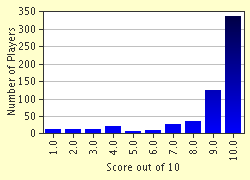Quiz Answer Key and Fun Facts
1. Keeping the promise we made to ourselves on our South Australian trip, we're approaching Western Australia (WA) from the east along the seemingly-endless Eyre Highway. With the Nullarbor Plain to the north and the Great Australian Bight to the south, we keep driving west before taking a detour inland. Our first stop is a town for whom mining is the driving force, being at the centre of the WA gold rush in the late 19th century. What is the town's name?
2. Phew! I don't know how those gold miners cope - it's so hot! Back into the car and onto our next destination, this time in the much more temperate south. Almost due south of our last stop, this coastal town is set amid beautiful scenery and boasts kangaroos sunbathing on its beaches!
3. Hugging the coast, we travel west to reach our next destination. This town, settled in 1826 and overlooking the Southern Ocean, is a place where you can indulge in activities from whale-watching to wildflower-admiration. Where are we going?
4. Our next stop is even further west, and still along the coast. The town we're heading for gives its name to a region known for making very fine wines. What is the town's name?
5. Northwards bound now, we're headed for the state's capital, Perth. Situated on the banks of the Swan River, Perth is a modern, spacious city and claims to be the most isolated capital city in the world (Adelaide, in South Australia, is the nearest capital city 2200 kilometres to the east). We've done some wandering around Perth and decide to take a day trip to an island just off the coast best-known for being a haven for quokkas. What is this island's name?
6. Sticking to a wildlife theme, we leave Perth and head north, following the state's west coast, en route a place now world-famous for giving visitors the chance to meet and swim with its resident dolphins.
7. Reluctantly leaving the dolphins, we're nevertheless excited about visiting the next town on our itinerary, which is only a bit further north and located right on the doorstep of a magnificent marine wildlife park as well as Western Australia's largest coral reef.
8. Back into the car again (this is one big state we're driving around!), we point the car northwards once more on the way to a town that is home to both industrial and natural wonders. This town really came into its own in the 19th century when increasing exports from the nearby goldfields led to the building of a jetty and an eight-kilometre causeway making this town the region's major port. What is its name?
9. We're really in the far north of the state now, well into the tropical region. Nearing the end of our trip, our next stop is often in the path of tropical cyclones and is known as the pearling capital of the world.
10. Our final destination is in the Kimberley region in the far north of the state. We've already seen an example of Western Australia's mineral wealth in the form of gold mining in the south; our next stop, the Argyle mine, is famous for producing which gemstone?
Source: Author
NatalieW
This quiz was reviewed by FunTrivia editor
Exit10 before going online.
Any errors found in FunTrivia content are routinely corrected through our feedback system.

